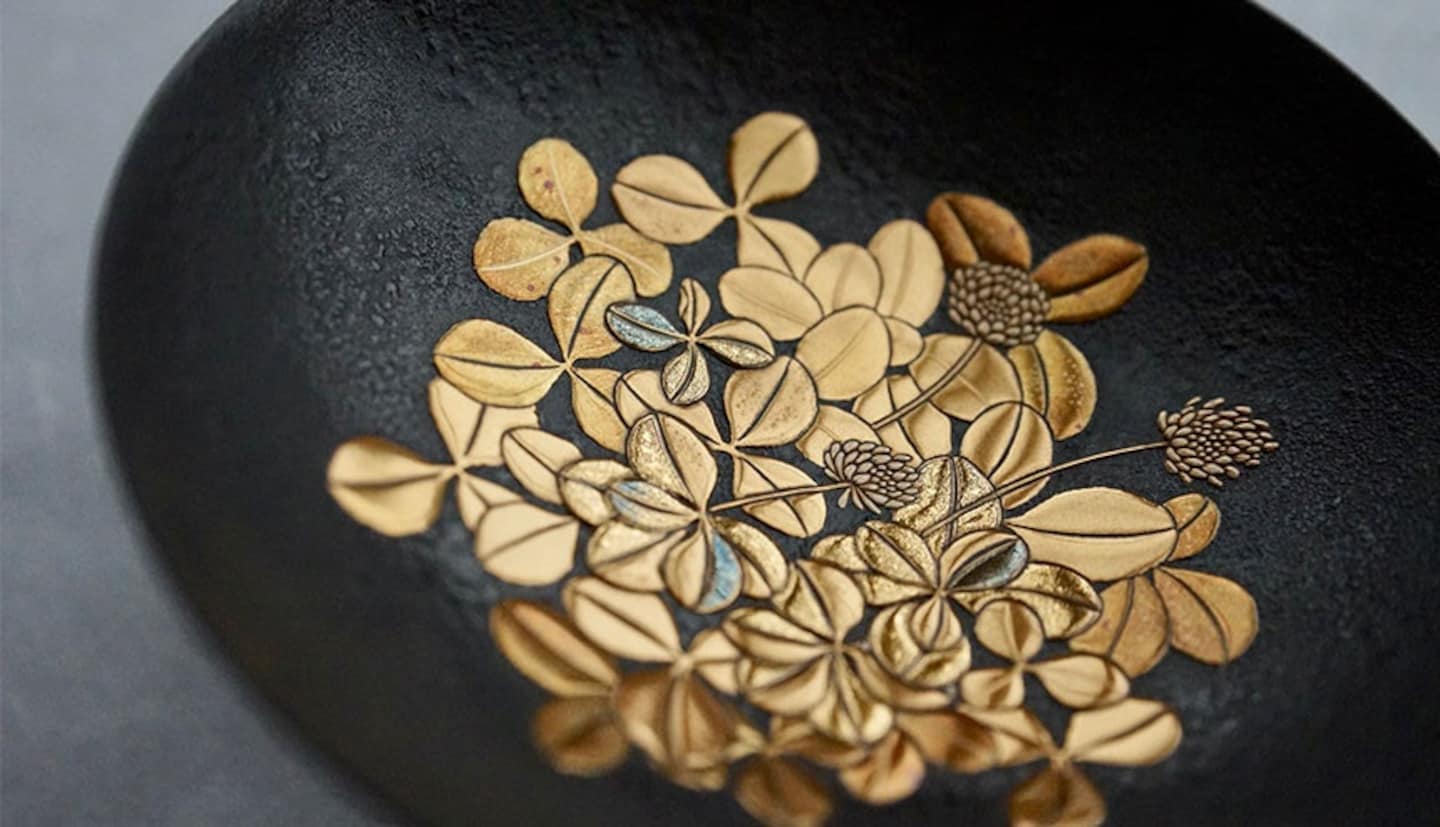The Organic Beauty of Kaga Lacquerware
A mountainous land dotted with hot springs, Yamanaka in Ishikawa Prefecture is a major center of lacquerware production, thanks to woodturners who emigrated to this area 400 years ago.
By Local Creators' Markethttps://www.youtube.com/watch?v=SWAYTJSB5xs
Maki-e, the art of lacquer painting with gold, silver and other powders, also came to the region in the Edo Period (1603-1868), giving rise to the tradition known as Yamanaka Maki-e. Today there are some 60 turners in the area maintaining the superb skills of their forebears. Their creativity, and that of the lacquer artists, promises many more chapters in this town’s formidable history of woodcraft.

The lacquerware tradition in Yamanaka Onsen began some 400 years ago, when a community of woodworkers settled in this hot-spring area—drawn by the curative waters, perhaps, but also by the dense forests available to them.
These woodturners used lathes to cut, sand, face, and otherwise shape wood into bowls and trays that they then lacquered themselves. Today close to 60 turners carry on their craft here, along with the lacquer artisans and traders who settled in the area later.

http://local-creators-market.com/kaga/
It’s not uncommon for those encountering wooden lacquerware for the first time to be taken aback by the material’s light feel and smooth finish. The combination strikes some observers as less like high-quality wood and more like plastic.
So what, exactly, is the appeal of lacquerware?

The main raw material of lacquer is sap collected from trees of the sumac family. The key component of varnish gathered in Japan is urushiol, a high-molecular compound, allergenic oil, and skin irritant.
As if handling this substance alone weren’t troublesome enough, in order to dry the varnish its naturally occurring enzyme laccase must undergo oxidized polycondensation, a process requiring a steady temperature of 20–25ºC and a humidity factor of 60 to 80 percent. A wooden chamber known as a muro is used to this end.
Once it dries, however, natural lacquer is incredibly tough. It is resistant to water, heat, salt, alkali and acid, and impervious even to nitrohydrochloric acid, a substance that can melt metal. A 2,000-year-old piece submerged in muddy water was found with its shine still in place. What’s more, a lacquer finish is both germ-resistant and antiseptic.

Lacquerware is also ecological. The bark of a varnish tree is cut and its sap collected drop by drop. Using traditional methods, only about 200 grams of sap can be recovered from a tree that has been growing for 15 years. Imagine! A raw material that will last more than 1,000 years can be recovered in 15.

Lacquer imparts a translucent effect to the surface it coats. When people first found the hardened sap in the forest, their instinct was to use it as an adhesive. It was later adapted as varnish once its beauty and protective properties were discovered.
A vermilion-lacquered comb from the prehistoric Jomon era, discovered in Fukui prefecture, has shown that lacquering techniques, as well as our quest for artistic expression, were well in place as early as 6,000 years ago.

Tools used for maki-e lacquerware painting. Sixth from the right is a brush made of human hair held between two boards. It is used to spread a thin layer of lacquer evenly. The long thin brushes, which are tipped with rabbit’s fur, are used to render fine lines.

Fountain pens by maki-e artist Mushu Yamazaki. Multiple coats of lacquer were polished down to portray karashishi lions, shells and other good-luck symbols, turning a writing instrument into a luxury article of understated elegance.
A cypress bridge spans the Daijoji River in Yamanaka. The healing waters of this hot-spring area were known to travelers long before the first lodgings were built in the late 12th or early 13th century, and became still more celebrated after Matsuo Basho (1644–1694) lauded them in his classic The Narrow Road to the Deep North. In the center of town are Kikunoyu, a renowned example of traditional bathhouse architecture, and the Yamanaka-za, a theater decorated with the maki-e paintings of the town’s artisans.





